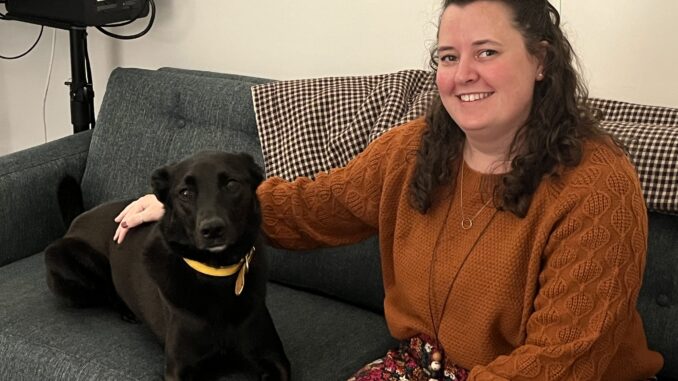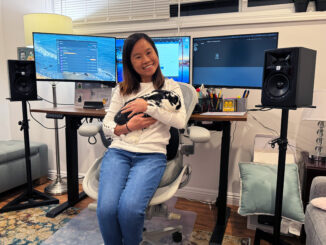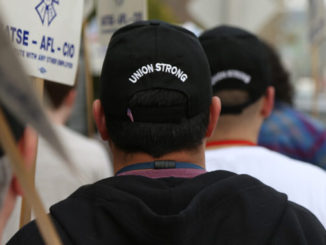
WHERE ARE YOU CURRENTLY EMPLOYED?
Universal Studios.
CURRENT PROJECTS?
I recently finished Paramount’s “Transformers: Rise of the Beasts,” and am currently working on Universal’s “Twisters.”
DESCRIBE YOUR JOB.
Visual effects editing is an interesting job in that we are part of the editorial team — we work closely with the editor, assistant editors, director, etc. — but at the same time, we also work very closely with the visual effects team on the show. We function as sort of a conduit between editorial and visual effects and spend a lot of time communicating changes and updates between the two sides of post.
A big part of our job is to keep track of every visual effects shot in the movie — how it changes throughout the edit — and relay that information to the visual effects vendors so they can work to the correct frame range and creative directives. We are responsible for turning over shots from the film to the visual effects vendors, meaning we give them the plate(s) for the shot, as well as any additional material they may need to create the shot such as balls and charts, clean plates, background plates, etc. Balls and charts and clean plates are special versions of the plate. Balls and charts refers to the version of the plate that has a ball with a reflective side and a matte side so that people making the effects can see how light plays on objects in the scene and a color chart to see how colors are affected by lighting. A clean plate is a version that has the same camera move and action as the main plate, just without actors in it so the visual effects artists have a clean plate to work with.
Once the vendors start turning around versions of shots, we ingest them into the Avid and update the current edit with the submissions so the editor and director can see them in the intended context. Then each shot goes through a series of stages through the visual effects process, with notes going back and forth between editorial and visual effects until it is officially approved and final.
Another part of our job is to create temp visual effects to help tell the story until we have actual effects to cover the shot. So a lot of the early stages of post are spent making temp visual effects. Then we transition into working with PostVis, a much cruder and cheaper version of visual effects that helps to flesh out ideas the filmmakers want in the film before it goes into the much more time-consuming and expensive visual effects process.
HOW DID YOU FIRST BECOME INTERESTED IN THIS LINE OF WORK?
I did a crude version of visual effects editing in a project called “Wireless” for Quibi in 2019-2020. At the time, I didn’t know that “visual effects editor” existed as a job, and I spent more than a year essentially reinventing the wheel and figuring out how to do that job without knowing anything about it. It was great experience but probably very inefficient.
When I decided to try to make the jump into film and started to apply for assistant editor jobs, I figured I should keep my options open and applied for visual effects assistant editor jobs as well. I lucked out and got onto “Transformers: Rise of the Beasts” as the visual effects assistant editor — and I fell in love with the work. It’s a great balance between creativity and very technical, data-based work. I get to do temp visual effects, which can be creative and fun, and work closely with filmmakers and witness the creative process firsthand. At the same time, I get to scratch the very technical side of my brain that, for whatever reason, loves spreadsheets, databases, and organization.
WHO GAVE YOU YOUR FIRST BREAK?
If we are talking first break in the industry, that would have to be a small commercial visual effects company, Eight VFX. They gave me an internship that turned into a production coordinator job. But if we’re talking about breaking into my current path, film, I would credit my current boss Warren Hickman and the “Transformers: Rise of the Beasts” team. They took a chance on me even though most of my work experience was in unscripted television and I only had one dubious visual effects editing credit. But Warren took me under his wing and taught me all about the job, and now I love it.
WHAT WAS YOUR FIRST UNION JOB?
The Quibi project I mentioned, “Wireless,” that came out in 2020.
WHAT CREDITS OR PROJECTS ARE YOU PROUDEST OF, AND WHY?
“Wireless” was such a fascinating show to be a part of. Essentially, we had to edit two films — one vertically oriented, one horizontally oriented, and both synchronized to the same audio track — that not only each told a full story separately, but also complemented each other to tell a larger story together. The show was made as though it was a film but was then broken up into short 10-ish-minute “quibis,” of course. There were many visual effects in that series, which was my first foray into visual effects editing. “Transformers: Rise of the Beasts” was the first feature film I worked on, so that also belongs in this category as it was the first time my name was on the big screen.
WHAT WAS YOUR BIGGEST CHALLENGE IN YOUR JOB (OR ON A PARTICULAR PROJECT) AND HOW DID YOU OVERCOME/SOLVE IT?
I think the most difficult part of the visual effects editing job is navigating the often opposing demands of the editorial and visual effects departments. There’s a lot of figuring out priorities and working to bridge the gap between the two departments. Sometimes you have to tread carefully so as to not step on anyone’s toes. You want to try to give everyone what they want and need, but that isn’t always possible, so trying to walk that line and keep everyone as happy as possible is the biggest challenge.
WHAT WAS THE MOST FUN YOU’VE HAD AT WORK?
I’m not sure about one specific event that would be considered the most fun I’ve had at work, but it’s the people that really make working in this industry great. When you’re spending 50+ hours a week with your co-workers, you’ve got to make it fun; otherwise, it’s not going to be a good time. I love bringing in little treats I’ve experimented with baking at home, going out to grab a drink after work on occasion, and just having a good time with my co-workers. My boss likes to introduce a movie review board to our crews where we each put up our reviews of movies we’ve seen, which is always a fun way to start conversations about the one thing we all have in common: movies rock!
JOBWISE, WHAT DO YOU HOPE TO BE DOING FIVE YEARS FROM NOW?
In five years, I’d love to be a visual effects editor (not just assistant) working on some cool big- budget movies.
WHAT ARE YOUR OUTSIDE ACTIVITIES, HOBBIES, PASSIONS?
Crafting and baking. I love working with my hands and making something out of nothing. I dabble in woodworking, love crocheting, sewing, and making delicious desserts for my friends and co-workers to enjoy.
FAVORITE MOVIE(S)? WHY?
“A Night At The Roxbury.” I know. I get looks whenever I say this, but I can quote pretty much the entire movie. I’ve loved it since I was in middle school. Additionally, pretty much every John Hughes movie. And “Singing In the Rain.” When I was growing up, I danced competitively, and my favorite solo tap performance that I did was to “Singing In the Rain,” so that musical has a special place in my heart.
FAVORITE TV PROGRAM(S)? WHY?
I tell everyone I meet that they need to watch “Dark” on Netflix — it’s so, so good. Some older shows that I love are “Buffy the Vampire Slayer,” “Frasier” (the original; it’s a perfect sitcom), “The OA” (let them finish it, Netflix!), “Chernobyl” (absolutely perfect in every way; I wouldn’t change a thing), “BoJack Horseman,” “black-ish,” “The Good Place,” “New Girl,” and “The Handmaid’s Tale.” I also have a soft spot for most house reno(vation) shows on HGTV, and competition shows like “America’s Got Talent” and “So You Think You Can Dance,” and “The Great British Bake Off.”
DO YOU HAVE AN INDUSTRY MENTOR?
Not officially, but my boss, Warren Hickman, fills that role pretty well. He has taught me so much about visual effects editing and helps me in and out of the business with his experience.
WHAT ADVICE WOULD YOU OFFER TO SOMEONE INTERESTED IN PURSUING YOUR LINE OF WORK?
Attention to detail is big in this job. There are a lot of numbers to keep straight, and you have to be able to catch slight differences in the edit. The community is pretty small because it’s such a niche position, and people are always looking for visual effects editors, so talk to people you know and see if they know of anyone looking for a visual effects assistant editor. I got my first visual effects assistant editor job from the union job board, so I’m proof that it does happen. It doesn’t hurt to go for it!
WAS THERE EVER A CIRCUMSTANCE WHEN YOU HAD TO RELY ON THE GUILD FOR HELP OR ASSISTANCE?
Not yet, but I know where to find you if I need you.
IS THERE ANYTHING YOU’D LIKE TO SAY TO YOUR FELLOW GUILD MEMBERS, SOME WORDS OF ENCOURAGEMENT?
I’m proud to be part of this Guild. I will always remember the day when I finally got my first membership card; it felt like I had finally made it in the industry. We have negotiations coming up later this year, and we are going to have to be strong coming off this year of strikes. It hasn’t been easy on any of us. We need to support each other as we have been supporting our writer and actor friends. Together we are strong.
- Compiled by David Bruskin






I love highlighting VFX editing here, but I have a serious problem with the term “VFX Assistant editor” rather than Assistant VFX Editor. While the difference is subtle, the ramifications are quite important.
“VFX Assistant Editor” implies there is no need for a VFX Editor, particularly in TV. This position will drive scale only compensation in the minds of the producers. “Assistant VFX Editor” is an accurate as the position assists the VFX Editor.
Titles matter.